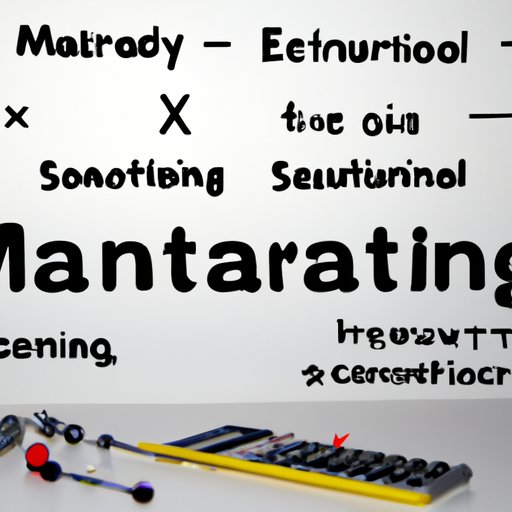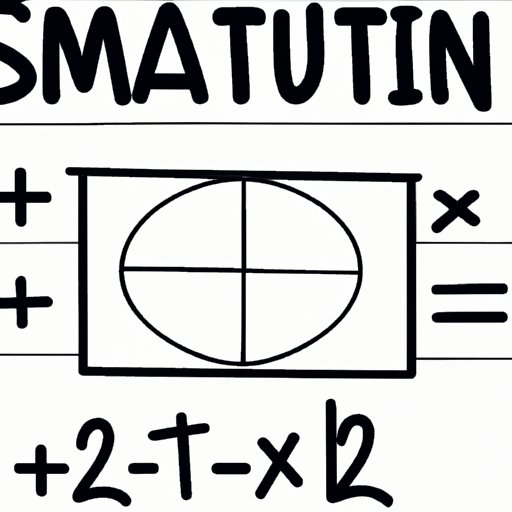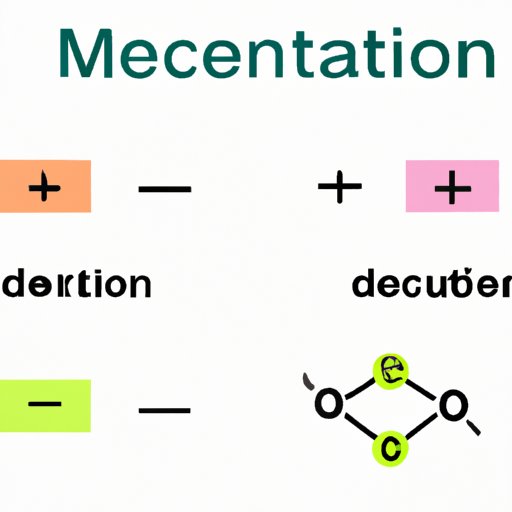Introduction
The relationship between math and science has been debated for centuries. While there is no clear consensus on whether math is a science or not, it is undeniable that the two are closely connected. This article will explore the definition of math and science, investigate the intersection of the two, look at how math is used in science, and contrast math and science to understand the differences between them. In doing so, it will help readers better understand the relationship between math and science.

Exploring the Definition of Math and Science
To begin, it is important to understand the definitions of math and science. Math is defined as “the abstract science of number, quantity, and space, either as abstract concepts (pure mathematics) or as applied to other disciplines such as physics and engineering” 1. Math is a branch of knowledge that deals with logical reasoning, abstraction, and calculation. It is a language that helps us understand the universe and make predictions about it.
Science, on the other hand, is defined as “the intellectual and practical activity encompassing the systematic study of the structure and behavior of the physical and natural world through observation and experiment” 2. Science involves studying the natural world, discovering patterns, forming hypotheses, and testing those hypotheses. Science is a process of using evidence to make sense of the world around us.
Investigating the Intersection of Math and Science
It is clear that math and science are distinct fields, but they are also deeply interconnected. Math is an important tool for scientists, as it provides a way to quantify and analyze data. Scientists use mathematical models and equations to describe and explain the phenomena they observe. As Nobel Prize-winning physicist Steven Weinberg puts it, “The only reality we can describe in any detail is the one expressed by mathematics.” 3
The role of math in science is twofold. On one hand, math can be used to interpret and understand scientific data. On the other hand, math can be used to generate new scientific theories and discoveries. Math provides a way to make predictions and test hypotheses, allowing scientists to gain a deeper understanding of the natural world.

How Math is Used in Science
Math is used in many different branches of science, from chemistry to biology to astronomy. In chemistry, for example, math is used to calculate the properties of molecules and chemical reactions. In biology, math is used to model population growth and to study the spread of diseases. In astronomy, math is used to calculate the orbits of planets and to model the evolution of galaxies.
The use of math in science offers many benefits. For one, it allows scientists to make more accurate predictions about the natural world. Math also provides a way to test hypotheses and draw conclusions from data. Finally, math can be used to develop new theories and uncover previously unknown phenomena.
Contrasting Math and Science
While math and science are closely related, it is important to understand the key differences between them. Math is an abstract field that deals with logical reasoning and calculation, while science is an empirical field that uses evidence to make sense of the natural world. Math is a tool used by scientists, while science is a process used to make sense of the world.
Understanding the distinction between math and science is important. It helps us recognize the importance of math in science, as well as the limitations of math in understanding the natural world. By understanding the differences between the two, we can better appreciate their interconnectedness and use math to gain a deeper understanding of the world around us.
Conclusion
This article has explored the relationship between math and science. We have looked at the definitions of math and science, investigated the intersection of the two, examined how math is used in science, and contrasted math and science to understand the differences between them. The findings suggest that math and science are closely connected, and that math is an important tool for scientists. Understanding the distinction between math and science is key to appreciating their interconnectedness and utilizing math to gain a deeper understanding of the world around us.
Further research could focus on the various ways math is used in different branches of science, as well as the implications of this usage. Additionally, further research could examine the history of the relationship between math and science, as well as its impact on modern society.
(Note: Is this article not meeting your expectations? Do you have knowledge or insights to share? Unlock new opportunities and expand your reach by joining our authors team. Click Registration to join us and share your expertise with our readers.)
